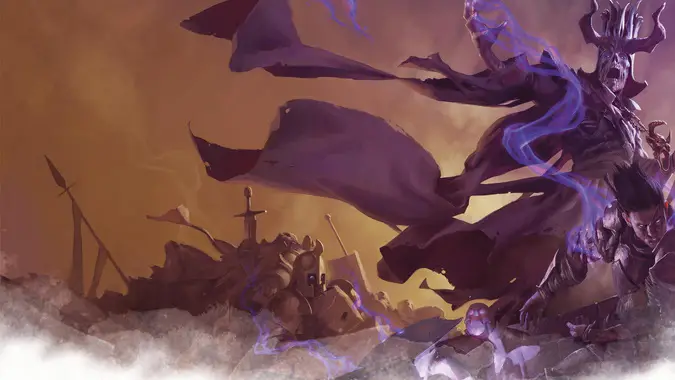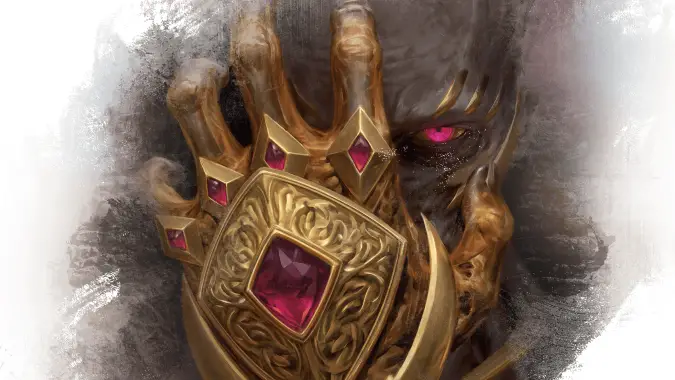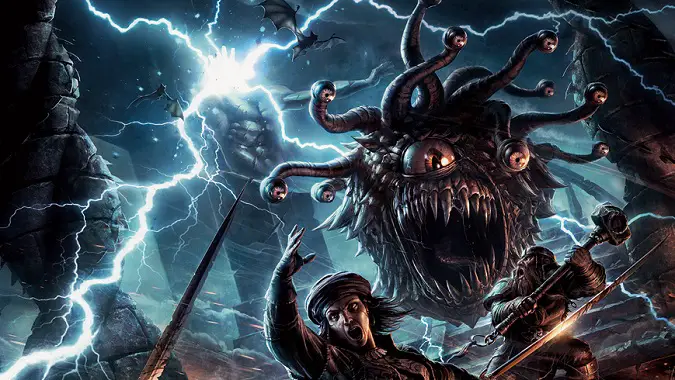D&D 5th Edition’s revised Dungeon Master Guide promises better organization, more relevant info

Alongside working on the new Dungeons and Dragons Player’s Handbook for the revised 5th edition of D&D next year — yes, it’s now referred to as “revised 5th edition,” not “One D&D” or “6th Edition” or anything else –Wizards of the Coast is also working on revamping the Dungeon Master’s Guide. They recently released a video explaining a lot of the thought that has gone into the newly revised book. The key takeaways are that they intend the updated book to be more organized and contain better concrete information for Dungeon Masters to use at the table.
At one point during their deep dive video, Chris Perkins states that he doesn’t believe anyone would look at the current D&D Dungeon Master’s Guide, or DMG, and rate it a 10 out of 10. Common feedback is that information is poorly organized or couched in other, less relevant info that makes things harder to find. One obvious example is the chapter flow. The current Dungeon Master’s Guide throws new Dungeon Masters directly into the deep end in chapter 1 with information on creating an entire campaign world (right down to details like currency and religions!) while info about basics of running the game can be found as late as chapter 8 — or not even found in the book at all.
Now that they’ve got the time, team, and budget to properly give the DMG the makeover it deserves, it seems like Wizards is aiming to make this a more useful resource for DMs of all skill levels.

Something old, something new, something borrowed, and a couple surprises
One of the things we learned right off the bat in the deep dive was, essentially, the table of contents.
- Chapter 1 is the basics. While this info comes fairly far into the current DMG, in the revised DMG the info that’s right up front will teach you the basics of how to run the game. Pretty important stuff to have in an easy-to-find area, so no objections here!
- Chapter 2 is concrete DMing advice. This is something missing from the current DMG and something that Chris Perkins has stated is meant to help guide more players to trying their hand at Dungeon Mastering. There can be a lot thrown at you at the table when you’re in the DM seat, and the intention here is to include specific examples of situations that can arise at the table and then give specific, tried-and-true advice on how to handle things, with a focus on “showing, not telling” — concrete advice instead of abstract ideas.
- Chapter 3 is an alphabetized rules compendium, including the rules that aren’t in the Player’s Handbook revision. My assumption is this will be along the lines of what we’ve seen in the playtest material for the revision thus far, and if so, that’ll be a valuable resource for finding specific rules quickly.
- Chapter 4 is focused on adventure building. One specific that got called out as being in this chapter is the idea of addressing how much prep you actually need to do to create an adventure, combined with some minimal prep adventure examples — more of that providing of concrete advice, which I love.
- Chapter 5 is where the campaign building information that used to be at the very beginning has now moved to.
- Chapter 6 is the cosmology chapter — info on gods, other planes, and so on.
- Chapter 7 is the magic items chapter. One specific note mentioned is that due to there not being enough common magic items, the common magic items from Xanathar’s Guide to Everything will be included in the DMG, as well as more common magic items meant to fill gaps in the current slate of them.
- Chapter 8 is “a surprise to be talked about potentially later.” As a small hint, there’s mention later of something that is in the new DMG that isn’t in the old one.
- There are also several appendices, including a map appendix – the idea being to include multiple useful, reusable maps for DMs because, “DMs love maps” — and a lore glossary. This latter one is especially nice with the game having its 50th anniversary next year — even in a game where most of the creative work happens at the table, there are a lot of recurring power player NPCs (think Strahd von Zarovich, Mordenkainen, Zuggtmoy, the Demogorgon, Vecna, etc.) and famous locations (the Temple of Elemental Evil, Waterdeep, etc.) that DMs might not be familiar with, so this lore glossary is intended to serve as a reference to important people, places, and things from the game’s five-decade-long history.
Rules are also being graduated from sourcebooks like Tasha’s Cauldron of Everything and Xanathar’s Guide to Everything. Aside from the aforementioned magic items, rules that have become fairly integral to the game are also being pulled into the DMG, like the rules from Tasha’s for running a “Session Zero” — a first session to create characters, get everyone on the same page as to the party and the campaign, and make sure everyone starts off with the same expectations for what the campaign will consist of. Considering that in the time since 5th Edition first released nearly every indie and non-indie RPG has already integrated this concept, it’s nice to see D&D catch up with the times in this instance.
There’s also a poster map (of what? another surprise!) included in the new DMG, as well as a full campaign. I’m assuming here Perkins means a fully-detailed campaign setting. My speculation is that, combined with the map, the multiple references to it being the game’s 50th anniversary, and the return of Vecna as a villain in 2024 and beyond, I’m guessing that this might finally mark the return of Greyhawk as a 5th Edition D&D setting.

Bonus hints on the future of the Monster Manual, too
It wasn’t just the DMG that got talked about here, either. The Monster Manual is getting a revamp for the revised 5th edition release, too, and may be, “the largest Monster Manual to date.” Like the DMG, the Monster Manual is getting a reorganization, since it’s, “alphabetized but not really” due to monster families — for example, presently the fairly-iconic Gelatinous Cube is actually not found under G, but under O, for Ooze. They also mention a need to address challenge ratings, especially at higher levels. There’s both a lack of monsters at some challenge rating levels, and in other cases monsters meant for high-level parties aren’t actually meeting their CR number so they’re being made more of a challenge to ensure they hit that value. Plus, more monsters are just being added — both new and existing ones — to fill gaps identified by teams or fans where the current slate of monsters is lacking.
All in all, the changes to both books sound extremely positive — especially the organizational aspects of both, making info easier to find for dungeon masters, but also the idea of concrete advice and easing people into information in the proper order so more players try their hand at DMing instead of possibly getting overwhelmed right away thinking they need to also be master-level writers instead of just halfway-capable improvisers and really good listeners. Anything to help people enter this fantastic hobby, in my opinion, is definitely a plus.
Please consider supporting our Patreon!
Join the Discussion
Blizzard Watch is a safe space for all readers. By leaving comments on this site you agree to follow our commenting and community guidelines.
 @awaymessageclub
@awaymessageclub



